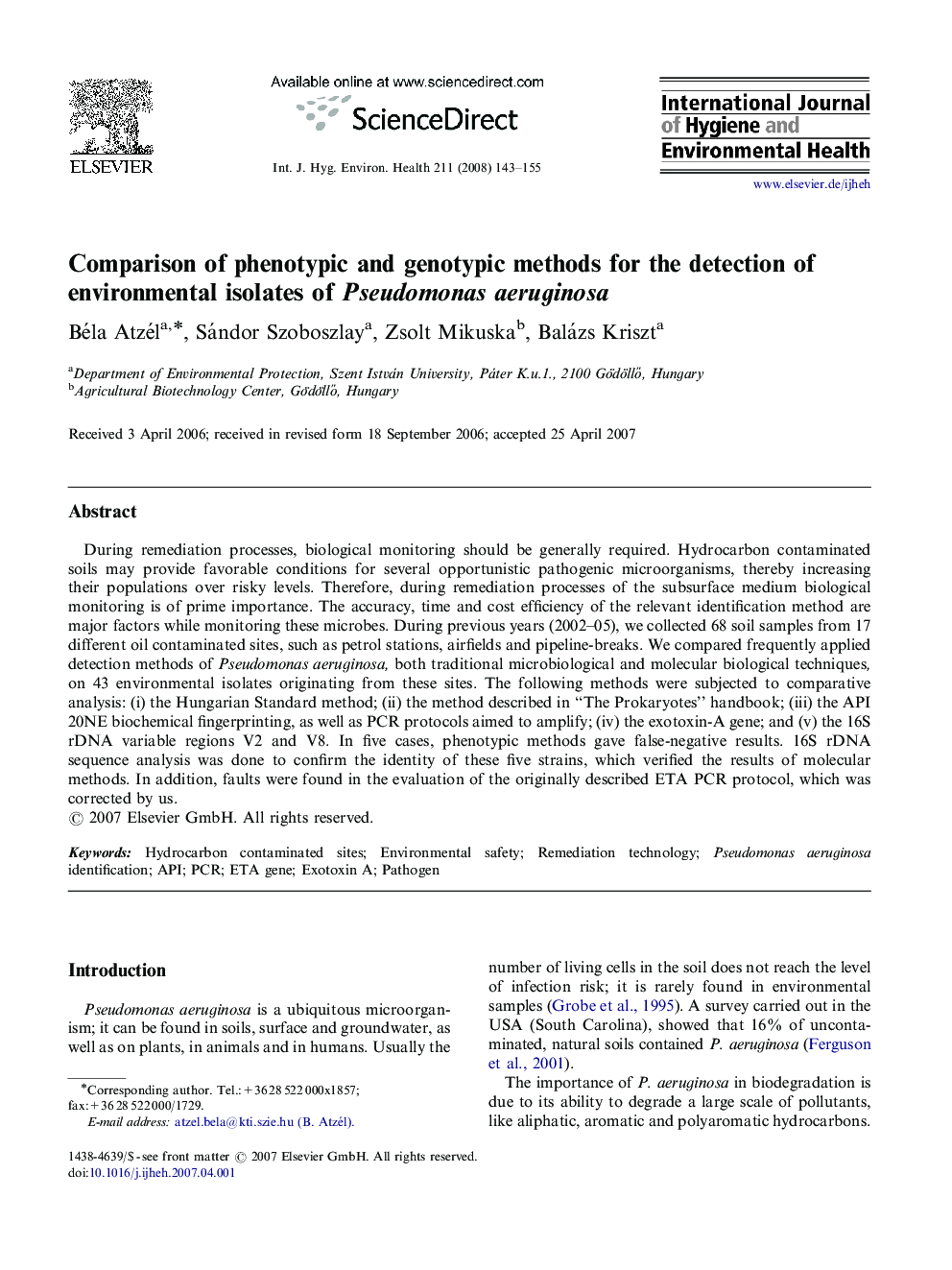| Article ID | Journal | Published Year | Pages | File Type |
|---|---|---|---|---|
| 2589111 | International Journal of Hygiene and Environmental Health | 2008 | 13 Pages |
During remediation processes, biological monitoring should be generally required. Hydrocarbon contaminated soils may provide favorable conditions for several opportunistic pathogenic microorganisms, thereby increasing their populations over risky levels. Therefore, during remediation processes of the subsurface medium biological monitoring is of prime importance. The accuracy, time and cost efficiency of the relevant identification method are major factors while monitoring these microbes. During previous years (2002–05), we collected 68 soil samples from 17 different oil contaminated sites, such as petrol stations, airfields and pipeline-breaks. We compared frequently applied detection methods of Pseudomonas aeruginosa, both traditional microbiological and molecular biological techniques, on 43 environmental isolates originating from these sites. The following methods were subjected to comparative analysis: (i) the Hungarian Standard method; (ii) the method described in “The Prokaryotes” handbook; (iii) the API 20NE biochemical fingerprinting, as well as PCR protocols aimed to amplify; (iv) the exotoxin-A gene; and (v) the 16S rDNA variable regions V2 and V8. In five cases, phenotypic methods gave false-negative results. 16S rDNA sequence analysis was done to confirm the identity of these five strains, which verified the results of molecular methods. In addition, faults were found in the evaluation of the originally described ETA PCR protocol, which was corrected by us.
